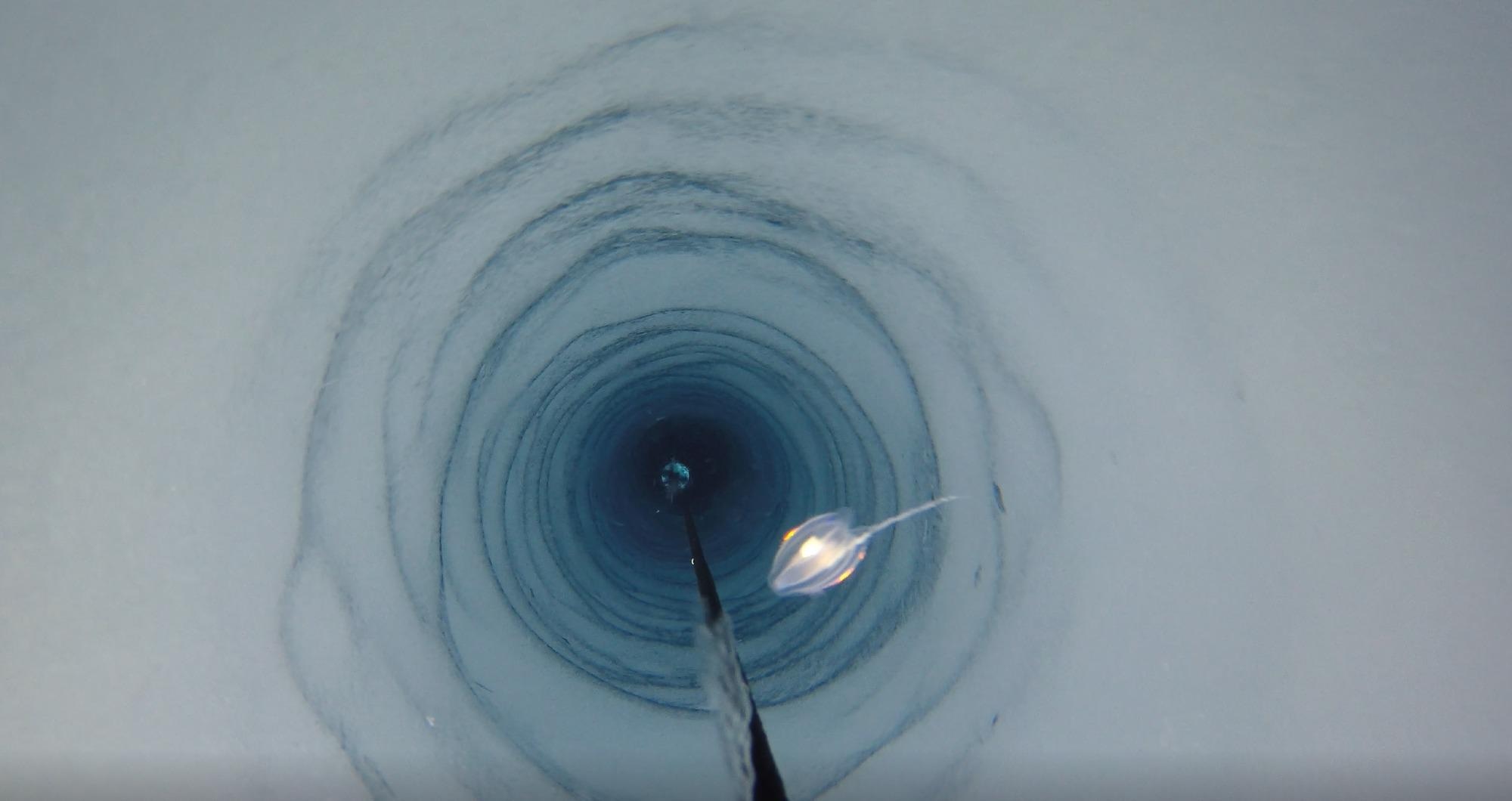Feb 16 2021
A new study published recently in the Frontiers in Marine Science journal reports that there is more life than predicted far beneath the Antarctic ice shelves.
 British Antarctic survey camera traveling down the 900-m-long borehole in the Filchner-Ronne ice shelf (marine creature pictured is unrelated to the discovery). Image Credit: Dr Huw Griffiths/British Antarctic Survey.
British Antarctic survey camera traveling down the 900-m-long borehole in the Filchner-Ronne ice shelf (marine creature pictured is unrelated to the discovery). Image Credit: Dr Huw Griffiths/British Antarctic Survey.
As part of an exploratory survey, scientists drilled through 900 m of ice in the Filchner-Ronne Ice Shelf, located on the southeastern Weddell Sea. Very few animals have ever been noticed in these conditions at a distance of 260 km away from the open ocean, with temperatures of −2.2°C and under complete darkness.
However, this study is the first to find the occurrence of stationary animals—analogous to sponges and possibly various previously unknown species—bound to a boulder on the seafloor.
“This discovery is one of those fortunate accidents that pushes ideas in a different direction and shows us that Antarctic marine life is incredibly special and amazingly adapted to a frozen world,” noted biogeographer and lead author, Dr Huw Griffiths of British Antarctic Survey.
More Questions than Answers
Our discovery raises so many more questions than it answers, such as how did they get there? What are they eating? How long have they been there? How common are these boulders covered in life? Are these the same species as we see outside the ice shelf or are they new species? And what would happen to these communities if the ice shelf collapsed?
Dr Huw Griffiths, Study Lead Author and Biogeographer, British Antarctic Survey
Floating ice shelves are the most unexplored habitat in the Southern Ocean. Although they encompass over 1.5 million square kilometers of the Antarctic continental shelf, only a total area the size of a tennis court has been investigated through eight previous boreholes.
Existing theories about the kind of life that could survive under ice shelves indicate that all life becomes less abundant while moving further away from open water and sunlight. Previous studies have discovered certain small mobile predators and scavengers, like worms, fish, krill, or jellyfish in these habitats.
However, filter-feeding organisms—that rely on a supply of food from the above—were predicted to be among the first ones to disappear further beneath the ice.
It was surprising for the team of geologists to drill through the ice to gather sediment samples, and hit a rock rather than mud at the bottom of the ocean below. They were much more astonished by the video footage showing a large boulder presenting strange creatures.
New Antarctic Expedition Needed
This is the first record of a hard substrate (that is, a boulder) community deep underneath an ice shelf and appearing to challenge all earlier theories of what kinds of life could survive there.
In light of the water currents in the area, the team estimates that this community could be nearly 1,500 km upstream from the nearest photosynthesis source. Although other organisms are also known to gather nutrients from chemicals in methane seeps or from glacial melts, the team cannot gain more insights about these organisms until they have the tools to gather samples of these organisms—a huge challenge in itself.
To answer our questions we will have to find a way of getting up close with these animals and their environment—and that’s under 900 meters of ice, 260km away from the ships where our labs are. This means that as polar scientists, we are going to have to find new and innovative ways to study them and answer all the new questions we have.
Dr Huw Griffiths, Study Lead Author and Biogeographer, British Antarctic Survey
Griffiths and the team also state that due to the climate change crisis and the breakdown of these ice shelves, there is not much time left to analyze and protect these ecosystems.
Journal Reference:
Griffiths, H. J., et al. (2020) Breaking All the Rules: The First Recorded Hard Substrate Sessile Benthic Community Far Beneath an Antarctic Ice Shelf. Frontiers in Marine Science. doi.org/10.3389/fmars.2021.642040.